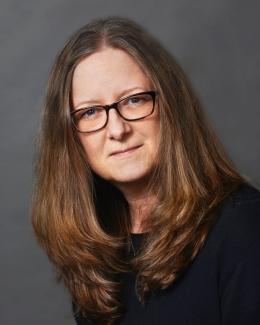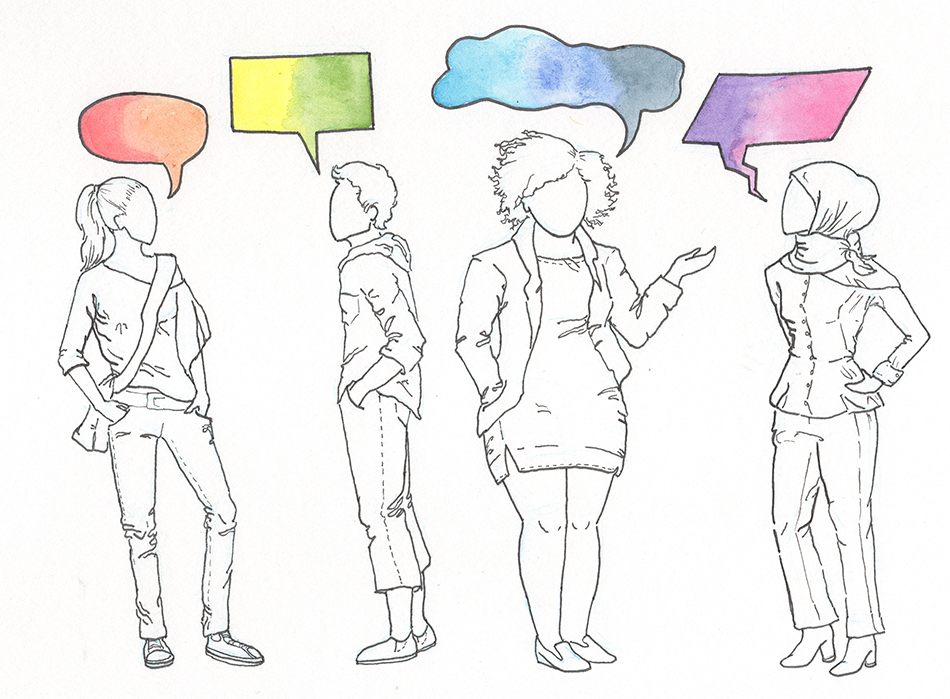Image credit: Rachel Cripps @miss_rachelclaire
A publicly funded gender affirming voice training program in BC gives participants the tools to find and develop their true voice.
Developed in 2004 by School of Audiology and Speech Sciences (SASS) Clinical Assistant Professor Shelagh Davies, Changing Keys is funded through the Provincial Health Services Authority/Trans Care BC and offers voice feminization training to help participants develop a voice that matches their gender identity while ensuring voice production remains easy and healthy.

The person is the authority on their own sense of gender, and our job is to help them reflect this.
Clinical Assistant Professor Shelagh Davies
In a series of two-hour sessions over nine weeks, six participants learn techniques including adjusting speaking pitch, vocal resonance, onsets of vowels, and speech flow, and are given homework to practice.
The training helped Gabby Yu to identify and change unsustainable vocal crutches that had developed from a lack of proper maintenance and a limited set of tools. Yu took an online Changing Keys program this year and appreciated that the instructors specialized in voice feminization. "Changing Keys gave me the tools to sustain the voice that I liked."
"For trans people, ultimately we're looking for our voice. If that voice doesn't feel like you, there's some disconnect."
Gabby Yu
While the techniques can help achieve societal ideas of a feminized voice - for instance, women may speak in a more flowing rhythm than men, and pronounce first vowels less forcefully – “the program is about giving participants the tools to find a voice that reflects who they are and how they feel,” says Changing Keys instructor and Language Sciences member Sherri Zelazny. “Sometimes, people participate in Changing Keys and will then modify their ideas about their voice and goals or realize they are happy with their voice as it is.”
There is need for the program: the waiting list is around six months to a year, and while this is less than the two years or more when the program first started, this is still too long, says Natalie McKay, who took Changing Keys in 2019. “This is the lowest hanging fruit of some of the things trans people need," says McKay. "There's a stereotype of the trans woman who looks flawless and men ask her out and she talks in a low voice. It's played for a gag but it literally gets trans women killed, especially women of colour."
More awareness of the training is needed, she says, which offers not just safety but also comfort. For instance, misgendering occurs less frequently in everyday life.
"Think of going through your day...every time you order food, interact with anyone for anything, you are having to talk to them...every time, it's a little needle, feeling the world isn't seeing you as you."
Natalie McKay
With no voice feminization protocols available in 2004, Davies adapted the evidence-based Resonant Voice Therapy program of Dr. Verdolini Abbott to be trans specific, and Changing Keys was born. Initially, the group format was mostly a budgetary measure, but she now wouldn't offer training without a group component, as it can prompt discussions and communication.
Gender affirming voice training is a fertile area of research, Davies says, with more work needed to understand what makes a voice sound masculine or feminine as well. As well, although the Changing Keys tools can be useful for those who identify as non-binary, more research is also needed in this area of voice training. Although the literature suggests a quarter of trans men have voice difficulties, there is currently no funded voice masculinizing program in BC. “The best thing that could happen towards development of Changing Keys group for trans men would be identification of need. If you are a trans man wanting help with your voice, contact TransCare BC," Zelazny says. A similar program focused on singing in a different register would also be useful, says McKay.

The in-person group program is offered in Vancouver, Victoria, Surrey, and Kelowna, with telehealth services currently offered province-wide. Five Speech-Language Pathologists (SLPs) serve as instructors. There are plans to create a program to train more SLPs as instructors, and offer this model to other provinces, says Zelazny, who is also a SASS Clinical Instructor. "We're very proud of the program. Personally, and professionally, I'm quite humbled to be part of the community."
Yu agrees that there's a need for more instructors. "There's a lot of trans people and sometimes we can't wait." Prior to training, she had anxiety about calling banks to change her details, for fear of the potential harmful reaction. "I was so scared to use my voice and to speak and if you aren't able to speak you can't demand respect from anybody.
"You feel voiceless, you feel like you can't communicate at all."
Gabby Yu
Davies is now retired, but says gender affirming work is a profound area of practice, which has an enormous impact on people's ability to live their everyday lives in comfort and safety. "The voice should always fit the person inside and if it doesn't, that's a problem, whether you're cis or trans."
To find out more, or to apply for the training, visit www.phsa.ca/transcarebc/
